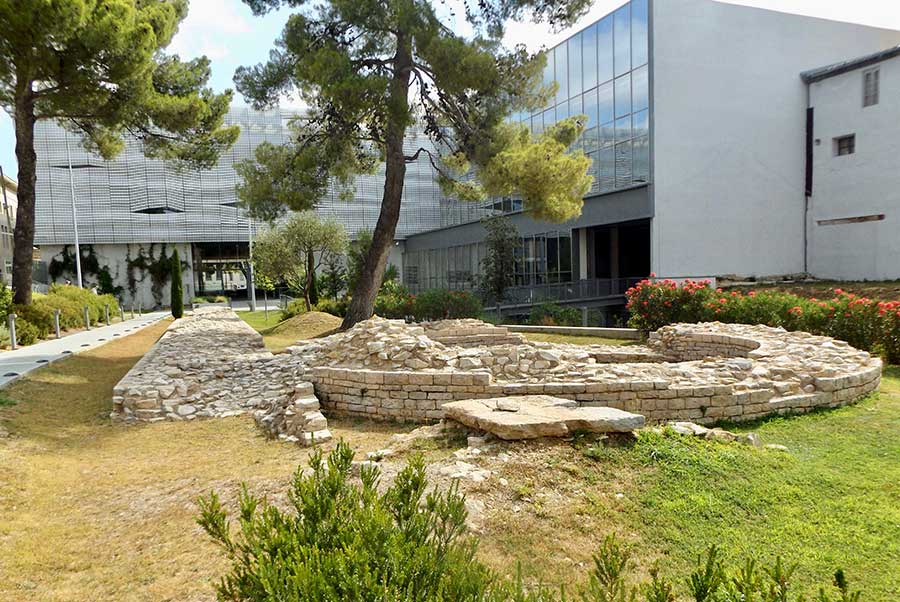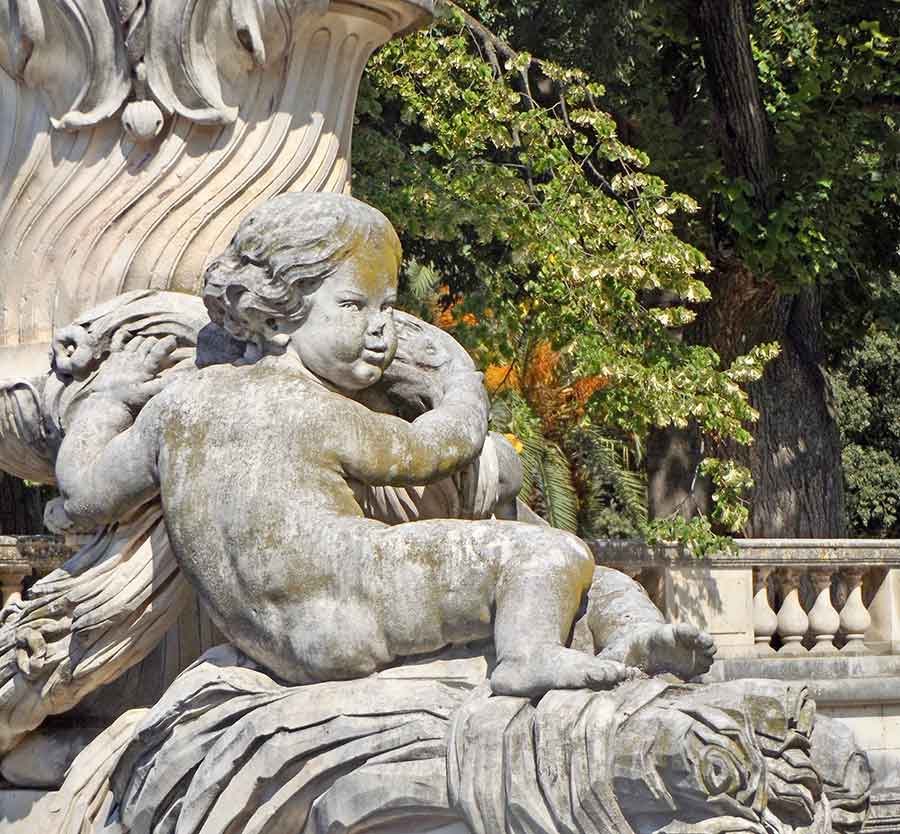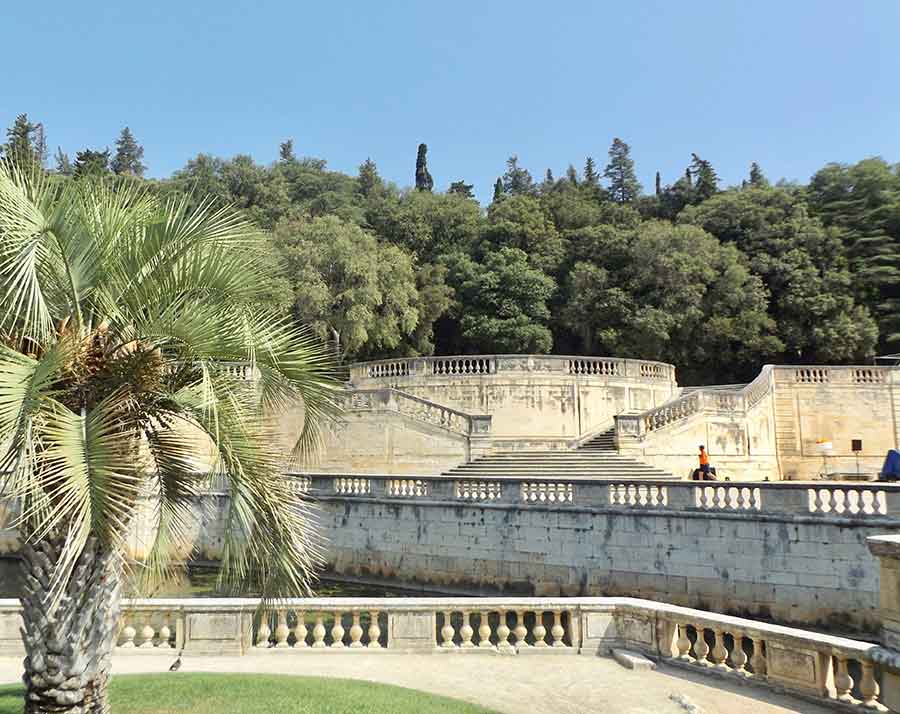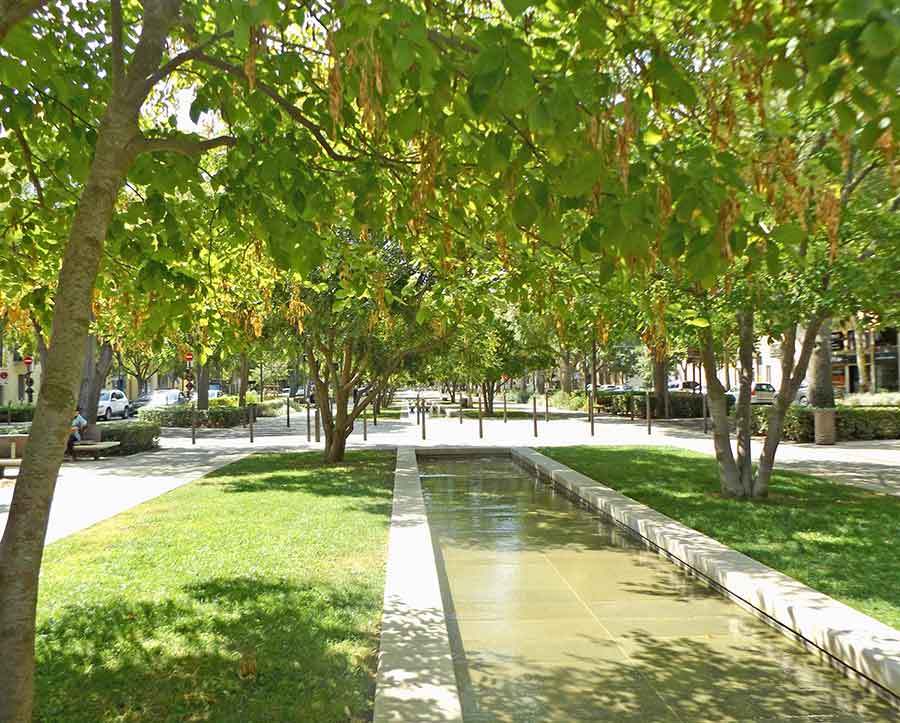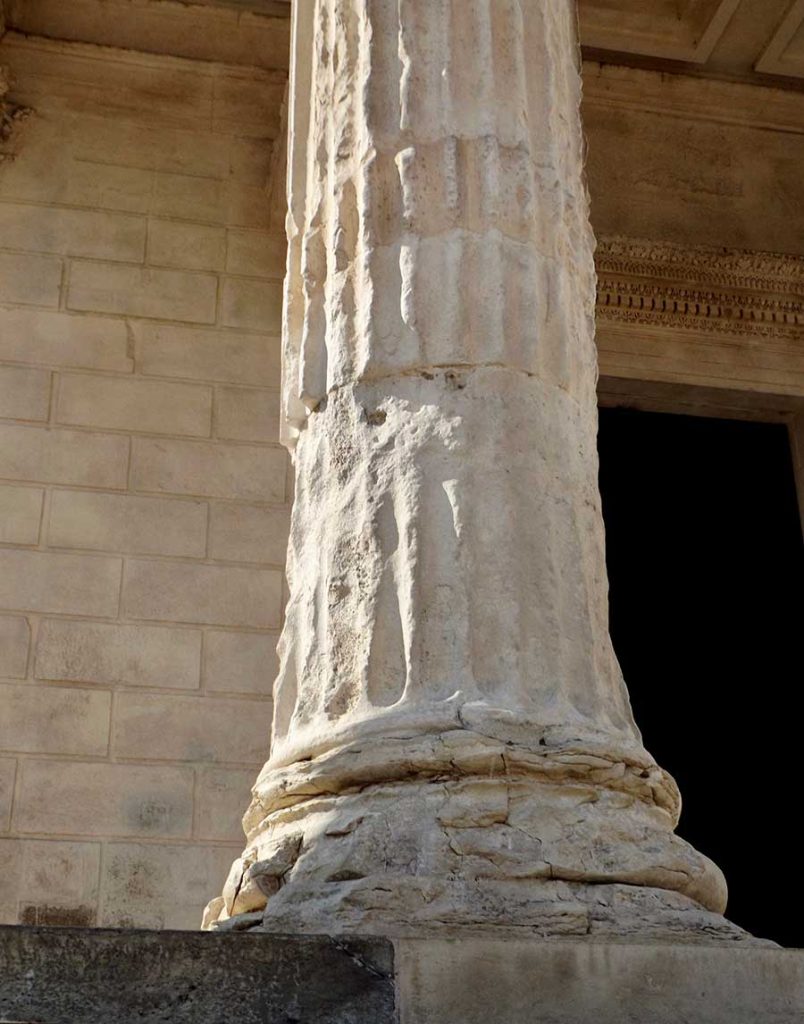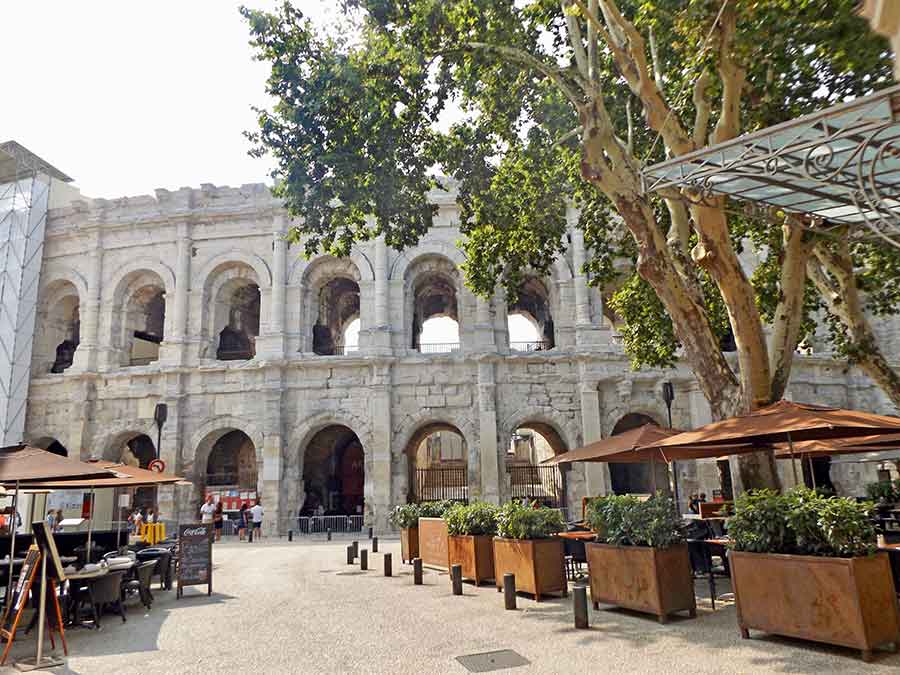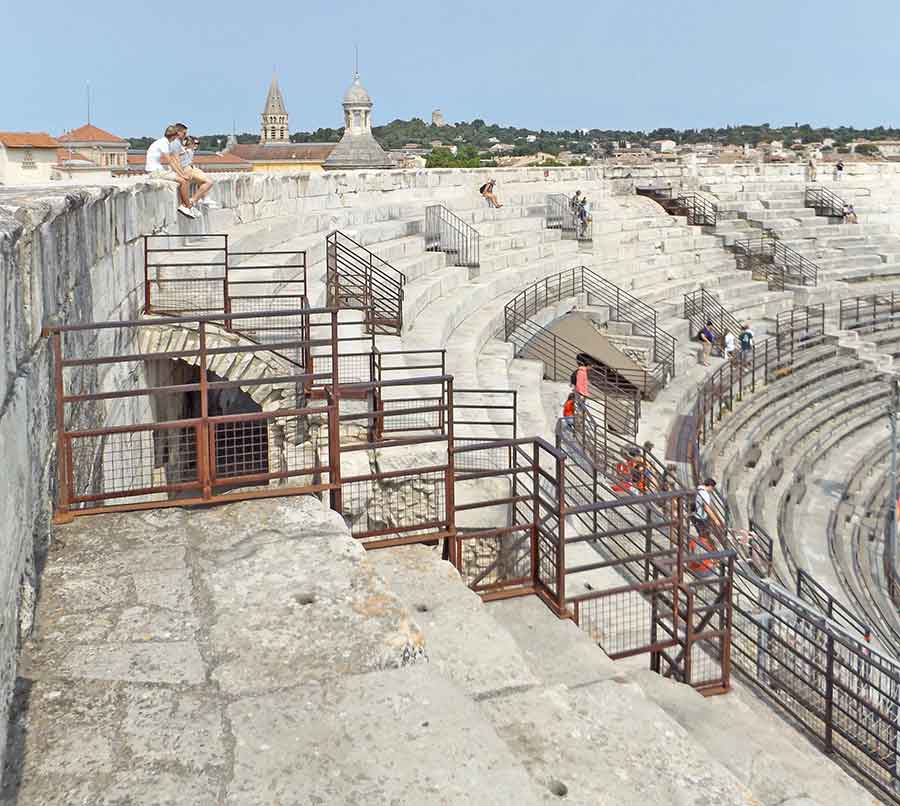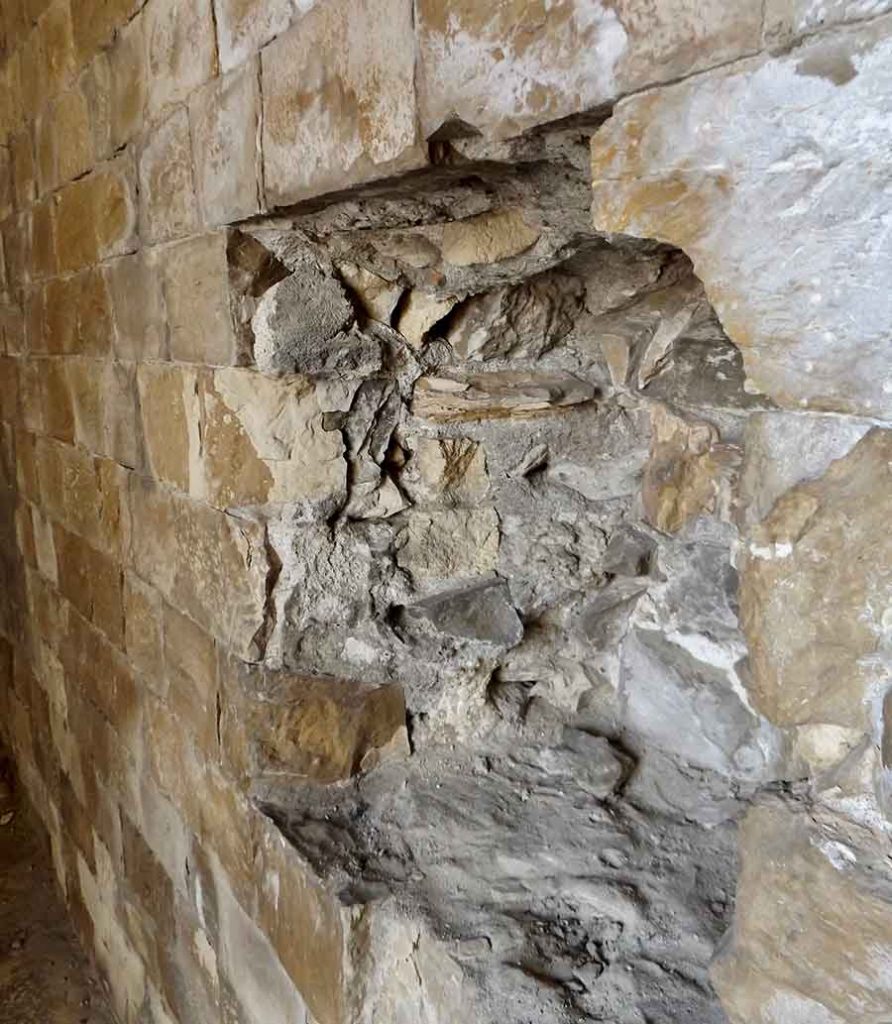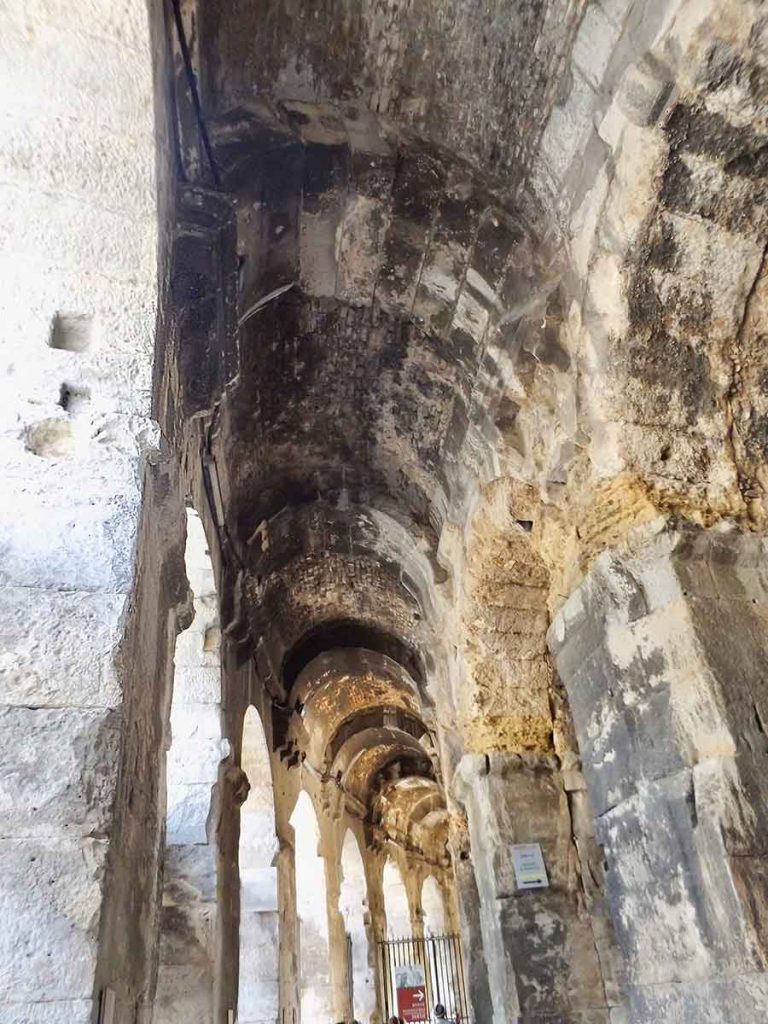This will be my last post from my travels. I could have done many more and will surely keep finding things I had wanted to share, but I thank those of you who have stuck with me.
I’d have to say that I was most impressed by the attention to what Roman relics remain… like this, preserved out the back of the very modern museum, in a garden of the typical plants of the time, especially aromatic ones.

Or this, one of the two surviving main gates of the old Augustan walled town: 1st century, kept on what are now main streets.

I also loved the charm of the later old streets and apartments, with their wrought iron balcony railings; this one was unusual in having a decorative upper trim, like a metal picot edge.


Where I stayed was a delight, with three French windows and aged blue shutters, right above a lively street, with buskers and bands, street stalls and crowded cafés. Being in the old town, no vehicle traffic… except for the small garbage trucks, collecting by hand in the wee hours.

I saw a lot from my front row seat.
Just across the way, in the next little street, was a church which ran a soup kitchen once a week.
Nîmes was busy with shoppers for the many boutique offerings… but also regular beggars.

Although I had the wonderful big Les Halles covered market close by, I also went to this one on my last Friday. I loved that stallholders were by now answering my questions, asked in my Aussie French, with floods of French, so it can’t have been too awful…

I could have stayed in France just to eat… the great variety of crusty breads in different flours; the aged cheeses with crusts like rocks and tastes I will forever miss.
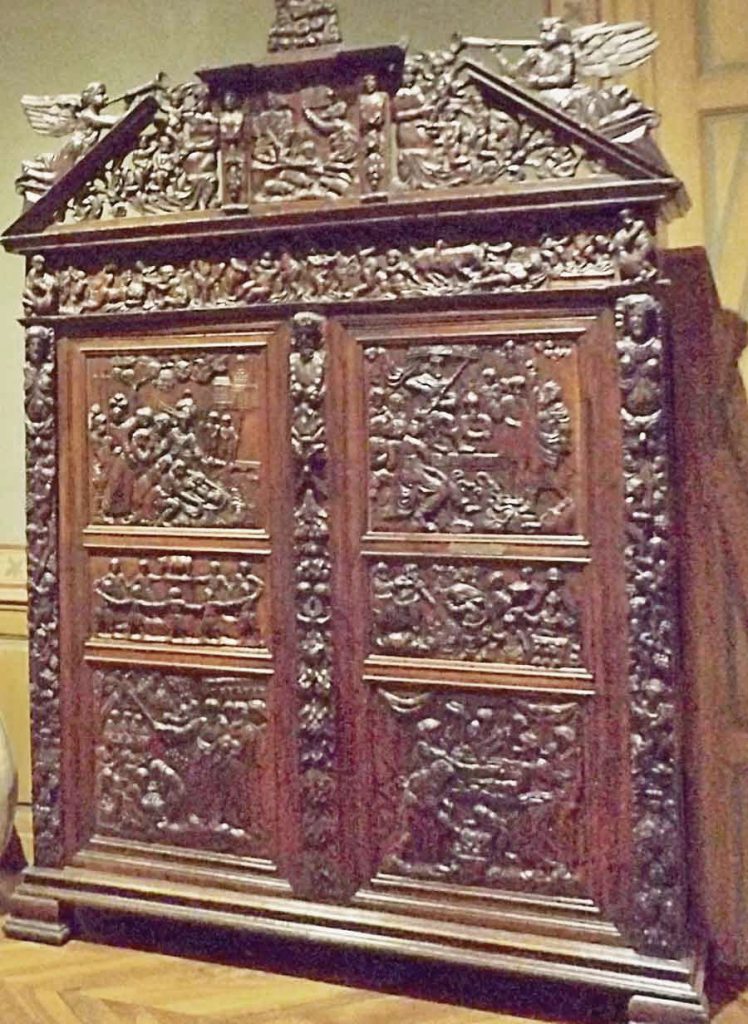
There were many marvels in the museums, while not answering all my questions.
The Museum of Old Nîmes was unsatisfactory as to how and why and if ‘serge de Nîmes’ became the ‘denim’ of Levi-Strauss jeans.
The old wardrobes made me wonder how anyone slept in a room with such overly decorated monstrosities.
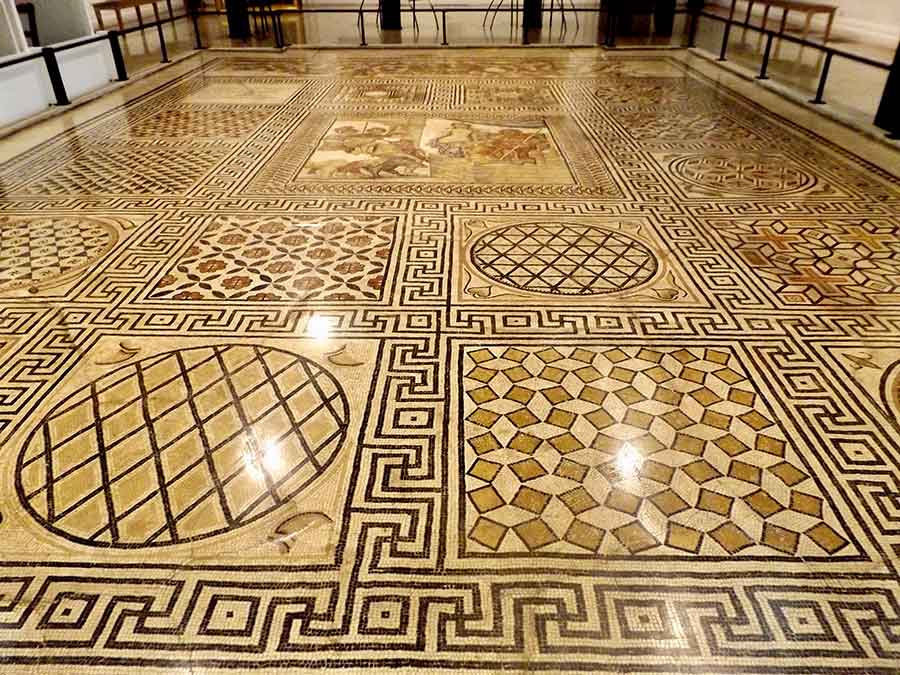
The Museum of Fine Arts had an amazingly intact Roman mosaic floor, discovered in the 19th century and relaid here. I noted that while the central piece is figurative, the rest is geometric, including several Escher-like patterns. Was there anything creative they had not thought of?

I enjoyed this Museum, but did wonder why the 18th century painters gave Cleopatra a perpetual wardrobe malfunction. No matter who she was meeting, like Mark Antony, she seemed unable to stop her dress slipping to expose a boob. Those handmaidens need talking to…
I come home with a head full of new understandings and images, so I thank the friends who made this trip possible, this experience of a lifetime, surreal though it seems in retrospect.
